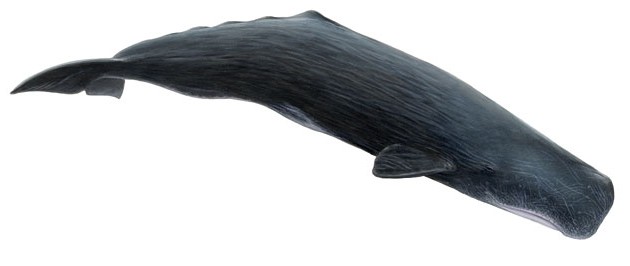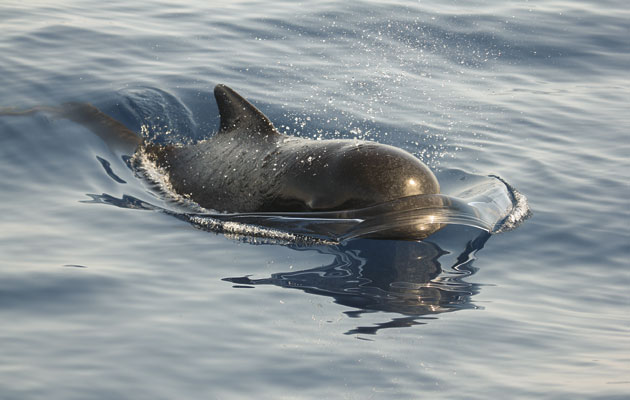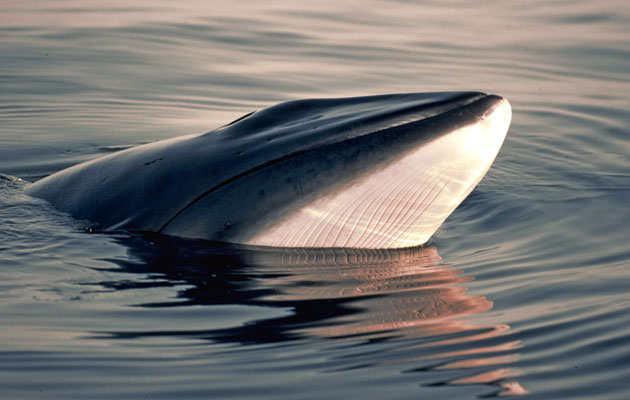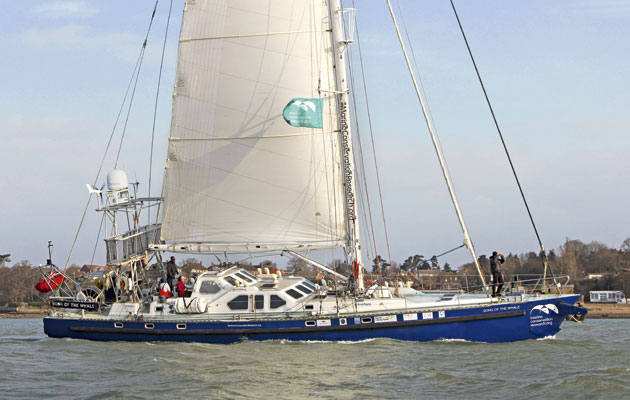Spotting wild whales and dolphins while sailing is a joy, says marine conservationist Anna Moscrop
Did you know that 28 types of whale and dolphin have been recorded in British and Irish waters? Eleven species are regularly seen, most often by people on boats rather than ashore. While some species, such as the harbour porpoise, are widespread, others may be regularly seen in certain areas, such as white-beaked dolphins in Lyme Bay; bottlenose dolphins in Cardigan Bay, the Moray Firth and the Shannon estuary; and minke whales off the west coast of Scotland. Other species are encountered less predictably. Humpback whales, blue whales and killer whales are seen mainly off the west coast of Scotland and Ireland.
Unusual encounters are occasionally reported, such as the group of long-finned pilot whales that visited the Essex coast last November, lone humpback whales that have been reported off Norfolk and Suffolk for several years in a row and, astonishingly, an Arctic bowhead whale off the Isles of Scilly in February this year.
So next time you head offshore, keep your binoculars and ID guide to hand – you might just see an unexpected splash, a dark fin or the distinctive blow of a large whale coming to the surface to breathe.
Download a PDF of the article here: Yachting Monthly Cetacean Guide
Fascinating variety of species
Cetaceans – the collective term for whales, dolphins and porpoises – are social and intelligent, with complex societies and behaviours. Toothed cetaceans (odontocetes) prey on fish and other larger animals. They range from the smallest porpoises to the deep-diving, sperm whale, which has the largest brain in the animal kingdom and produces the loudest sounds ever recorded in the wild.
Toothless (mysticete or baleen) whales use comb-like sets of baleen plates to filter small prey such as krill, shrimps and tiny fish from large mouthfuls of water. Before the advent of plastic, spring steel and glassfibre, baleen was used for making many strong, flexible items from umbrellas to carriage whips, corsets to collar stiffeners. Despite feeding on minute marine life, the baleen whales range from the inquisitive minke of around 9m long, to the singing humpback of about 15m, and the huge blue whale, up to 30m long – bigger even than the largest dinosaurs.
Cetaceans spend most of their time underwater, so if you spot one, you may only have a brief time to note any distinctive features. If possible, estimate length, for example, compared to the known length of a nearby boat. Check for a dorsal fin and if there is one, its size, shape and position. Blow size and shape can be useful to note, as can colouration.
Humpback whales have been reported off Norfolk and Suffolk for several years in a row
Some species demonstrate particular behaviours. As porpoises rarely break the surface, leaping animals are much more likely to be dolphins. Humpback and sperm whales frequently throw their tail into the air before making a deep dive. Humpbacks are perhaps the most acrobatic of large whales, occasionally propelling themselves right out of the water, called breaching. They also have large tail flukes and long, white flippers.
Some species, such as the minke whale and fin whale, may lunge through the surface so that their entire head can be seen and occasionally also breach. So do basking sharks, but they have a large, triangular dorsal fin and a sharp tail tip that sweeps the water surface as the shark feeds.
Many whales and dolphins rise up vertically and hold their head above water to visually inspect their surroundings above the surface, known as spyhopping.
Watching cetaceans in their natural habitat is exciting and awe-inspiring, but care must be taken to avoid disturbing them, as this could cause them to leave the area and may interfere with normal feeding and social behaviour. It is a privilege to be able to watch them in the wild and important that we protect them for years to come.
Whales, dolphins and porpoises are protected by UK and European law. If you see anyone disturbing or harassing them, please inform the police. Under UK law, skippers must ensure that they avoid affecting whales, dolphins, porpoises and basking sharks through reckless behaviour or intentional disturbance.
Download a PDF of the article here: Yachting Monthly Cetacean Guide
Whale sightings help science
We still know relatively little about cetaceans, so your sightings could be important scientific information. You may encounter a rare species, or witness a behaviour that few people have seen before. Note the location, numbers of animals and sea conditions and take a photograph if possible. Report your sighting when you get home.
Once hunted intensively off the UK and Ireland, cetaceans are now protected from hunting here. However, they and other marine wildlife face a range of threats, including pollution from plastic and toxic chemicals, entanglement in fishing gear, disturbance from ships and industrial activities, such as oil exploration and pile driving. Research and monitoring of cetacean populations is vital to inform measures to protect them and to monitor trends in abundance and distribution.
Until the 1980s our knowledge of whales was for the most part based on investigations of dead animals from whaling and strandings. Increasingly, benign techniques, which do not require scientists to kill or harm whales, are being used to study them. Survey techniques for counting whales and photo-identification of recognisable individuals can build up a better picture of the animals around our coasts. By photographing unique scars, fins and flukes of whales, researchers have gathered information over the years on identity, home ranges and associations between individual whales.
Download a PDF of the article here: Yachting Monthly Cetacean Guide
Marine Conservation Research International
Anna Moscrop is director of Marine Conservation Research International (MCR), a not-for-profit organisation conducting practical conservation projects on marine wildlife, and investigating human impacts including from underwater noise, disturbance and marine debris. MCR’s Song of the Whale is a purpose-built, steel-hulled 22m (72ft) sailing research vessel.
Over the past 20 years the team of sailors and scientists has studied endangered blue whales off Iceland, genetically isolated sperm whales in the Mediterranean Sea, extremes of harbour porpoise distribution, and searched for critically endangered monk seals.
MCR has a long history of pioneering and collaborative projects in remote and challenging locations, and developing new benign techniques, including using acoustics.
MCR needs new sponsors to continue its vital work protecting the marine environment and training future scientists and conservationists. Opportunities to sail with the MCR team are now available; the next trip is between Scotland and Iceland in August.
Find out more at MarineConservationResearch.org
Record your sightings
If you do see a cetacean, grab a camera, note where you are and record the details:
- Take a photo (if possible)
- Location
- Number of animals
- Sea conditions
- Approximate length
- Dorsal fin shape and position
- Blow size and shape
- Colouration
- Particular behaviours
- Flukes and flippers if shown
Report your sighting to:
- Sea Watch Foundation
www.seawatchfoundation.org.uk - In western Scotland, the Hebridean Whale and Dolphin Trust
www.whaledolphintrust.co.uk - In Ireland, the Irish Whale and Dolphin Group
www.iwdg.ie - For mammal sightings in the Greater Thames Estuary
www.zsl.org/inthethames
The dos and don’ts of whale watching by boat
- Always keep a good lookout. If you see cetaceans or basking sharks, slow down, avoid sudden changes in speed, direction or noise.
- Approach with caution, and never from head-on. If your engine is running, keep it on to maintain manoeuvrability and to ensure that the animals have heard you. Leave the area slowly, too.
- Never chase, encircle or overtake animals or cause groups to separate. Ideally, let them approach you.
- If cetaceans show any signs of
becoming disturbed or alarmed, move away and keep away. Mother and calf pairs are more easily disturbed and susceptible to collisions. - If another vessel is enjoying an encounter, wait until they have moved away before you approach. Always allow animals an escape route.
- Keep noise disturbance to a minimum; maintain your propeller, try to stay below cavitation speed, turn your echosounder off when it’s not required.
- Dispose of fuel, oil, rubbish, food and other contaminants appropriately ashore. Never dump them at sea.
Cetacean species guide
Harbour porpoise
Where to see them: Mostly coastal, found off headlands, in tidal rips and offshore in depths less than 50m
Size: Small and stocky (approx. 1.5m)
Description: Small triangular dorsal fin. Dark grey or brown in colour. Rounded head, no beak. Usually small groups, or individuals. Not very active on the surface, often seen just surfacing to breathe (sometimes with an audible ‘puff’, hence the nickname ‘puffing pig’, in some places).
Common dolphin
Where to see them: Oceanic, most common in the south-west, but now also in north and east
Size: Small, fast moving dolphin (1.6-2.5m)
Description: Slender, curved dorsal fin. ‘Hourglass’ pattern on sides. Cream lower flank, grey behind. Slender beak. Breaches and bow-rides
White-beaked dolphin
Where to see them: Common in the North Sea and north-west UK
Size: Stocky and up to 2.8m long
Description: Dark grey or black topsides, white sides and back behind fin. Tall, curved dorsal fin. Short, thick beak with white tip. May breach and bow-ride.
Risso’s dolphin (Grampus)
Where to see them: Usually in deeper water
Size: Large robust dolphin, up to 3.8m long
Description: Pale grey to white with heavy scarring (calves are darker and less scarred). Tall, curved dorsal fin. Large rounded head, no beak. Seen in small groups, may breach
Bottlenose dolphin
Where to see them: Mainly on Atlantic coast, some resident in bays and estuaries
Size: Large, robust dolphin, up to 4m
Description: Large, central, curved dorsal fin. Uniform grey or grey-brown colour. Pale underside. Short beak, rounded forehead. Acrobatic, may bow-ride.

Long-finned pilot whale
Long-finned pilot whale
Where to see them: Widely distributed in deeper waters around the UK and off the coast of Ireland
Size: A small whale, mainly black, 4-6m long
Description: Bulbous, rounded head. Low, curved back fin. Long flippers. Often to be spotted in tight, compact groups.

Killer whale (Orca)
Killer whale (Orca)
Where to see them: Mainly seen off west Scotland and Ireland, also in Irish Sea and off Cornwall
Size: Distinctive, medium-sized black whale (males up to 9 m long)
Description: Clear white markings, distinct oval patch behind eye and saddle patch behind dorsal fin. Males have a tall, vertical dorsal fin. Large, paddle-shaped flippers. A fast, acrobatic swimmer, which may breach and spyhop to visually orientate itself above the water.

Minke whale
Minke whale
Where to see them: Most common baleen whale around the UK and Ireland. Often seen close to shore and on the Atlantic seaboard, but also in the North Sea south to Yorkshire.
Size: Slender and streamlined whale, 7-9m in length
Description: Narrow, pointed head. Small, curved dorsal fin two-thirds of the way aft along the back. Brief arching roll when surfacing. Grey/black back, pale undersides. White stripe across flippers.

Humpback whale
Humpback whale
Where to see them: Rare, but off Scotland and Ireland in summer
Size: Large rotund whale, 11.5-15m in length
Description: Low dorsal fin or hump two-thirds aft. Knobbly head, jaw and flippers. Dark body, pale underside and flippers (very long). May raise flukes to dive. Flukes have serrated edges and light-and-dark pattern on underside. Active at the surface.

Sperm whale
Sperm whale
Where to see them: Found in deep water, beyond the Atlantic continental shelf
Size: Largest toothed whale, 8-16m
Description: Dark, with huge blunt, squarish head, narrow jaw and crinkled skin on back. Small dorsal hump. Spends up to an hour underwater. Bushy blow slants forward and left. Often raises tail flukes to dive.

Fin whale
Fin whale
Where to see them: Usually seen offshore in deeper water, along the Atlantic seaboard
Size: Very large baleen whale, 18-25m in length
Description: Grey body, white lower jaw, pointed head. Long, slow shallow rolling motion. Small dorsal fin, seen after blow. Tall cone-shape blow, up to 6m highere to see them Usually seen offshore in deeper water, along the Atlantic seaboard

Blue whale
Blue whale
Where to see them: Very rare. Mostly seen offshore in deeper water in summer, but calls also recorded in winter
Size: Huge baleen whale, the largest animal, up to 30m in length
Description: Blue–grey mottled appearance. Triangular or curved dorsal fin, set three-quarters of way along the back. Very tall, slender, vertical blow which can be up to 10m in height. Broad, flat U-shaped head.
All illustrations courtesy of Jon Baldur Hlidberg/Fauna















